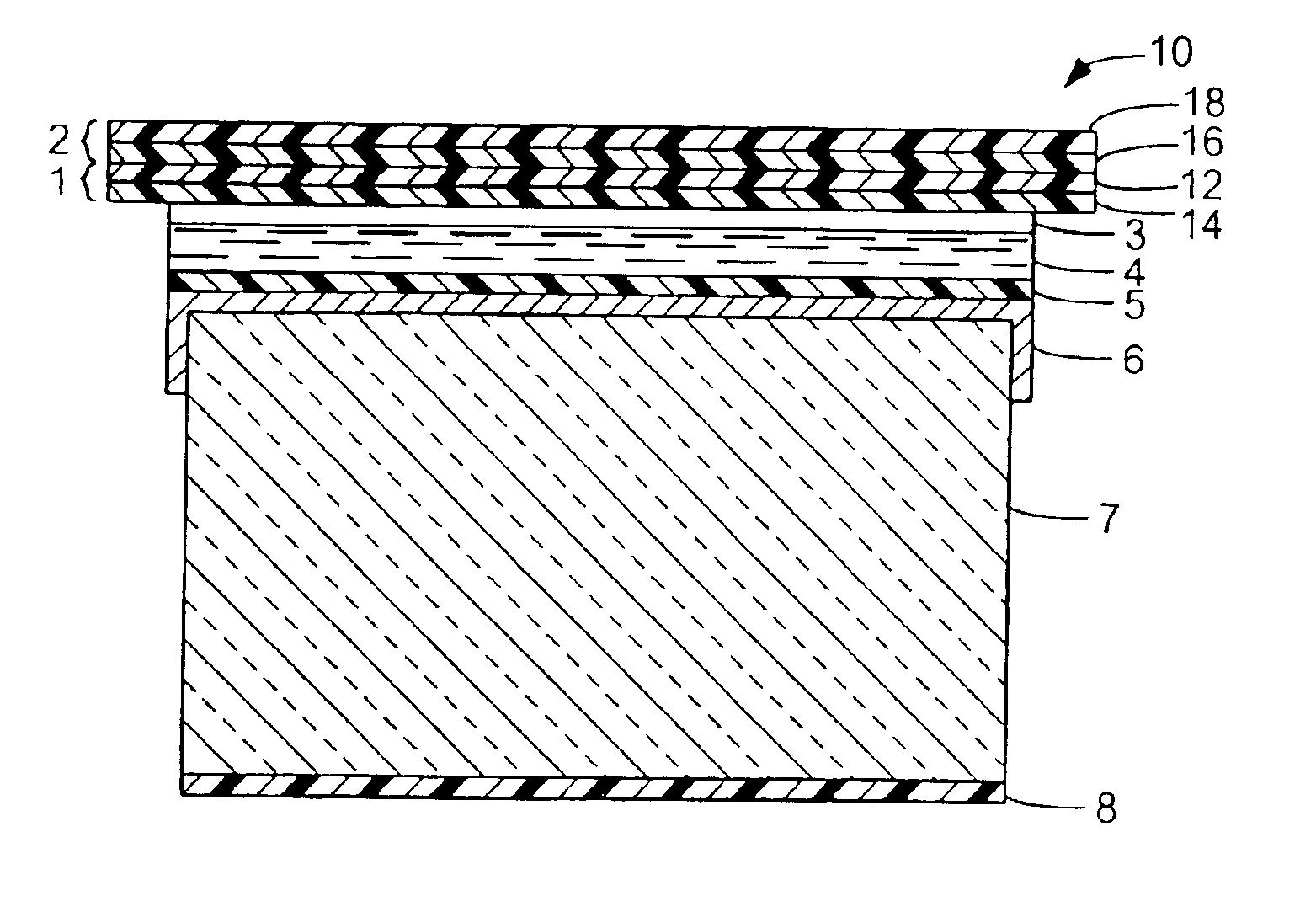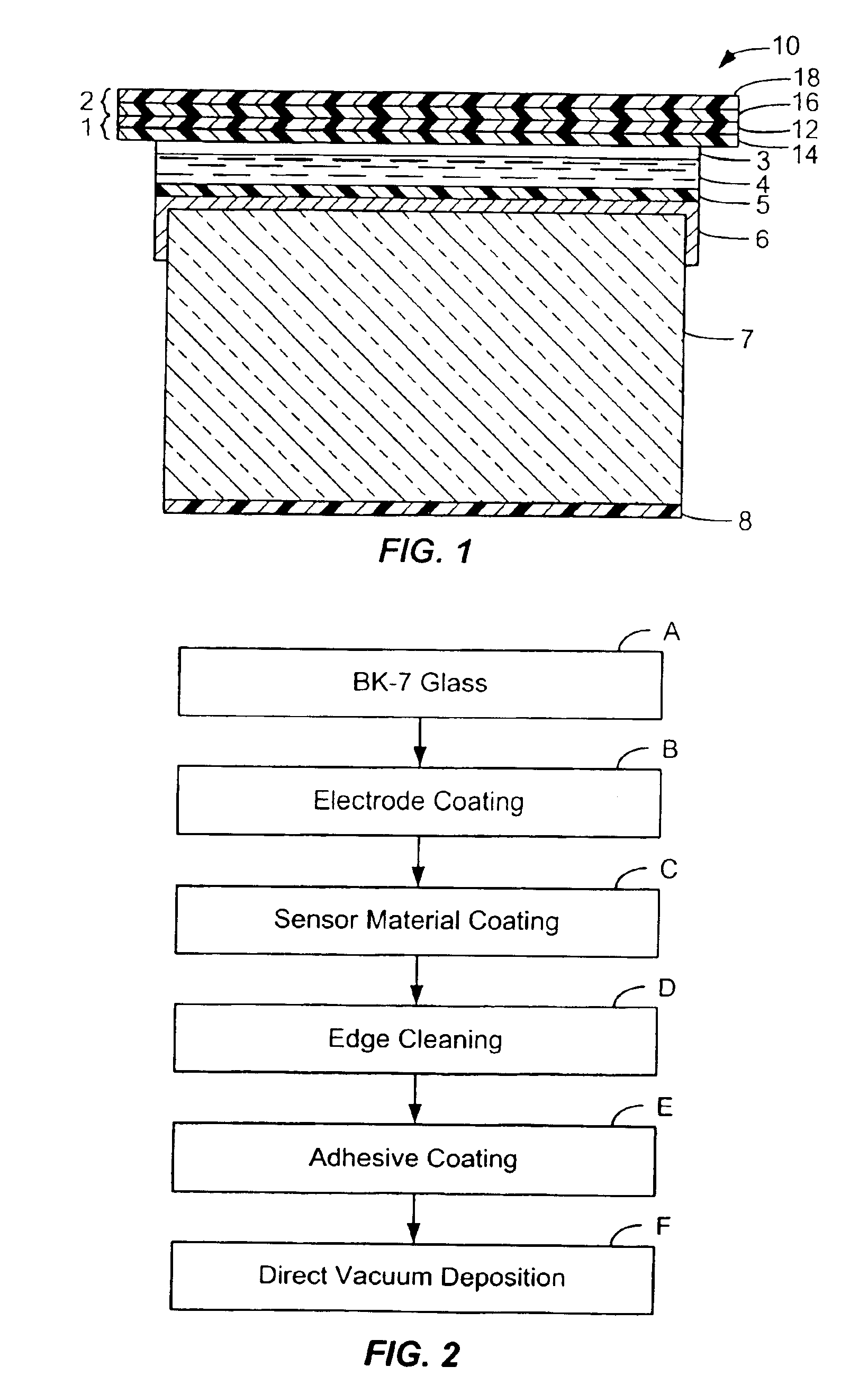Vacuum deposition of dielectric coatings on volatile material
a dielectric coating and volatile material technology, applied in vacuum evaporation coatings, coatings, instruments, etc., can solve the problems of difficult vacuum coating of materials that have a tendency to evaporate and decompose under vacuum, mechanical instability, and extremely low yield in manufacturing,
- Summary
- Abstract
- Description
- Claims
- Application Information
AI Technical Summary
Benefits of technology
Problems solved by technology
Method used
Image
Examples
Embodiment Construction
[0016]Referring to FIG. 1, there is shown a schematic cross-sectional view of an electro optic modulator device 10 manufactured according to the invention. This is only one example of a device manufactured according to this process.
[0017]In an optical element application, EO modulator 10 has at least two pairs 1, 2 of thin dielectric materials 12, 14, 16, 18 of alternately high and low index of refraction overlay a stress-absorptive polymeric adhesive layer 3. The polymer adhesive layer 3 has distinct characteristics as will be explained. The pairs 1, 2, which are not shown to scale, are bonded via the stress-absorptive polymeric adhesive layer 3 on a layer of volatile gelatinous material 4, specifically in an optical application, polymer dispersed liquid crystal (PDLC), which serves as the sensor material 4. The sensor material 4 rests on an optional layer of silicon dioxide 5. Thereunder is a layer of a transparent electrode material 6, such as indium tin oxide (ITO) which in turn...
PUM
| Property | Measurement | Unit |
|---|---|---|
| pressure | aaaaa | aaaaa |
| reflectivity | aaaaa | aaaaa |
| thickness | aaaaa | aaaaa |
Abstract
Description
Claims
Application Information
 Login to View More
Login to View More - R&D
- Intellectual Property
- Life Sciences
- Materials
- Tech Scout
- Unparalleled Data Quality
- Higher Quality Content
- 60% Fewer Hallucinations
Browse by: Latest US Patents, China's latest patents, Technical Efficacy Thesaurus, Application Domain, Technology Topic, Popular Technical Reports.
© 2025 PatSnap. All rights reserved.Legal|Privacy policy|Modern Slavery Act Transparency Statement|Sitemap|About US| Contact US: help@patsnap.com


